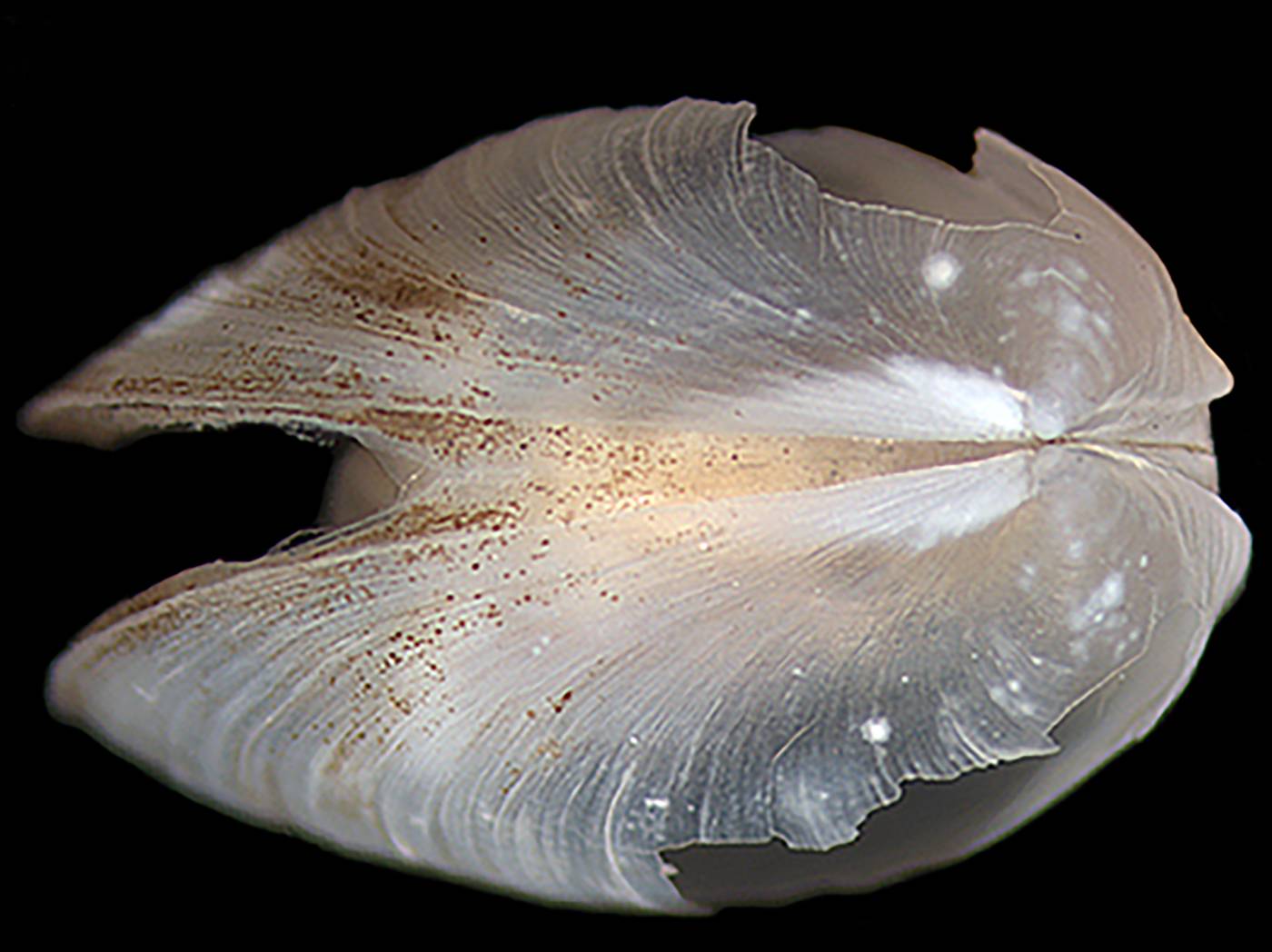The Japanese archipelago perches at the edge of the Eurasian tectonic plate, where the Philippine and Pacific plates slide beneath it. Because of this unique convergence, the eastern edge of the Japanese coast quickly drops off into a series of trenches, some of which extend nearly 10,000 meters below the surface — making them among the deepest in the world. The organisms that inhabit these punishing environments are little-known, with only a handful of surveys having been conducted.
Recent sampling suggests that the creatures who make these inky depths their home are mostly polychaete worms, crustaceans — like the predatory amphipod Rhachotropis saskia discovered in 2018 — and bivalve mollusks. They must eke out their existence in an alien landscape, devoid of light and poor in nutrients. And indeed, they look like aliens — many are eyeless and colorless.
Some of the mollusks that dominate these environments were described in a 2020 paper written by Gennady Kamanev of the National Scientific Center of Marine Biology at the Russian Academy of Sciences. In the publication, he catalogs a series of remarkable clams from the Kuril-Kamchatka trench, east of Hokkaido. The three newly discovered species belong to a family known as the Thyasiridae, many of which have adapted to deep sea habitats. Thyasirids are also abundant in the neighboring Japan Trench.



















With your current subscription plan you can comment on stories. However, before writing your first comment, please create a display name in the Profile section of your subscriber account page.